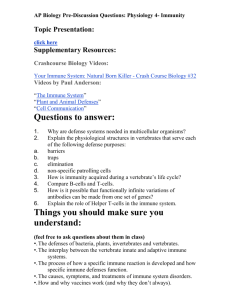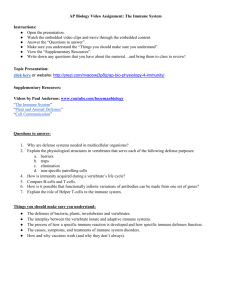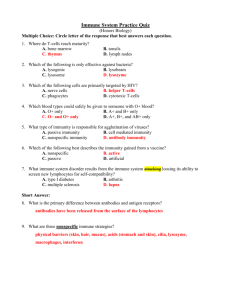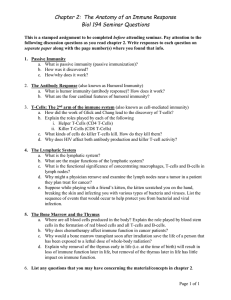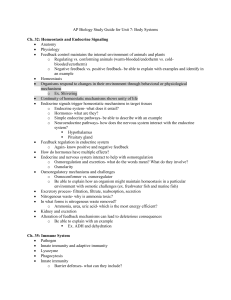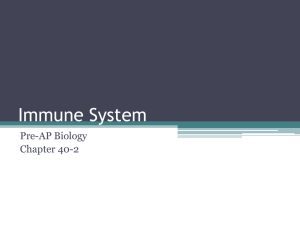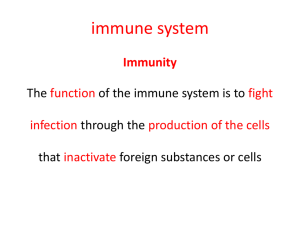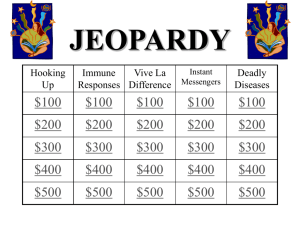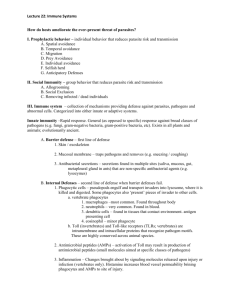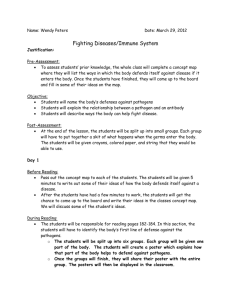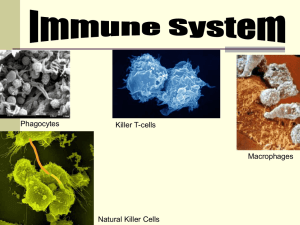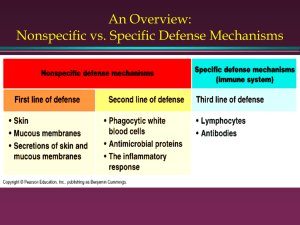Immune System is a group of cells in the body... ____________________________.
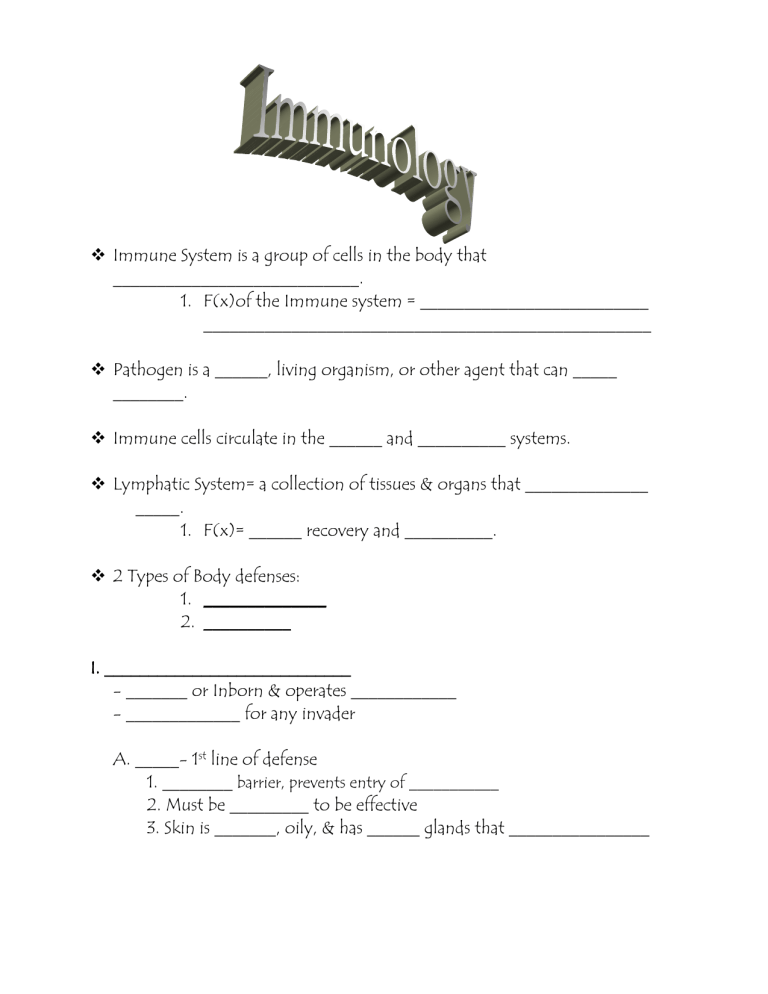
Immune System is a group of cells in the body that
____________________________.
1.
F(x)of the Immune system = __________________________
___________________________________________________
Pathogen is a ______, living organism, or other agent that can _____
________.
Immune cells circulate in the ______ and __________ systems.
Lymphatic System= a collection of tissues & organs that ______________
_____.
1.
F(x)= ______ recovery and __________.
2 Types of Body defenses:
1.
______________
2.
__________
I. ____________________________
- _______ or Inborn & operates ____________
- _____________ for any invader
A. _____- 1 st line of defense
1. ________ barrier, prevents entry of ___________
2. Must be _________ to be effective
3. Skin is _______, oily, & has ______ glands that ________________
B. ______ Membranes
1. Found in ___________, ________, __________, and __________
tracts
2. F(x)= trap pathogens & ________
C. Hairs
1. ______ passage
2. Trap debris & __________
D. ______
1. __________________ Tract
2. Trap debris & pathogens
E. _________________ (activated when other defenses are _________)
1. Phagocytes a. Cells recognize _____________ items b. F(x)= to ________________ debris c. Travel to infection site, via ______ _______ d. ___________ – a type of phagocyte
2. ___________ a. NK-cells= _____________________ b. WBCs police the ______ & ______ c. Bind to _________ of invader, release chemicals,
cause infected cells to _____
F. Cellular (_______) Defense
1. Inflammation= ______ defense response to tissue _______;
helps prevent spread of _______________. a. ________ of Inflammation
S=
H=
A=
R=
P=
2. ______= abnormal elevation in __________________ a. Stimulates ____________ b. Increases the ______________________
G. Chemical Defense
1. Interferons (___________ proteins) a. Secreted by _______________ cells b. Stimulates ____________ cells to make proteins that block
____________________ c. ______ infection to allow ____________ to begin working d. Activates macrophages to “eat” _____________
II. __________ Body Defenses
A.
_________= ability to ward off a _______________ or disease.
B. Process
1. Particular invader ___________, ____________ switched on,
invader is remembered so that ________ invasions can be
____________ fought
C. Specific Body Defense is born out of the _________________
D. _________
1. ________ or pathogen
2. ________: the _______ of an antigen ___________________
3. Stimulates formation of ____________.
E. Antibodies
1. Form due to ________ to a ________________.
2. Mark it for destruction by _______________.
3. Made by _________.
4. Found in all _______________.
5. Once present, allows __________ immune response to ________.
F. ______ T-cells – ________ other T-cells
G. ______ T-cells - _____________ & kill _________, release _________
to lyse cells
H. __________ T-cells – _____ immune response when antigen is
_____________________
I. Non-specific and Specific Defenses work together to protect the body from disease- producing pathogens
1. _______ mature in bone tissue
2. T-cells mature in _______ tissue
III. Applications of Immune Response
A. _____________= process that __________ an organism’s _____ to an
______ & therefore _______ its ability to ______ or
overcome infection.
B. Vaccine= living or ___________________ used to _______________
immunity
C. Types of Immunity (3)
1. _______ a. Response to antigen that is _______________, or if person
recovered from a ________________ b. __________ immunity
2. ________ a. Antibodies produced from another organism _______ into
the body b. __________ protection against the disease.
3. _____________ a. Killer T-cells attack any cell ____ marked with a special
________ b. i.e. cells that are ___________
